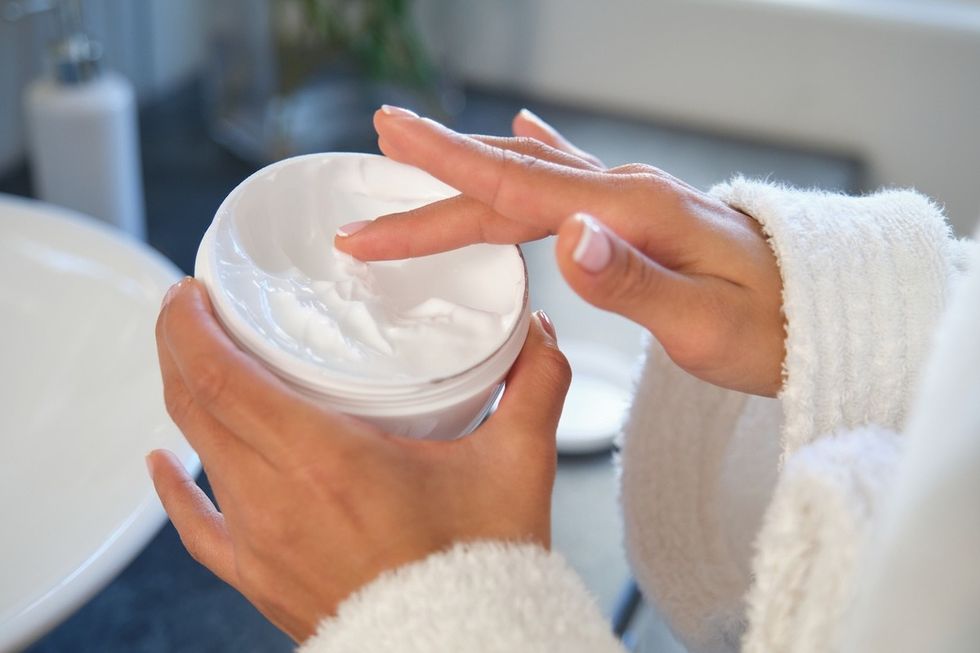The internet has found skincare’s Next Big Thing. Urea is an organic compound that touts impressive skin health benefits, particularly when it comes to hydration and elasticity. It’s often used as a main ingredient in moisturizing serums, gels, creams, and body lotions. And given the cold, dry winter we’ve been having, it probably comes as no surprise that urea is trending. Some dermatologists say urea can also help soothe certain skin conditions, including psoriasis. Learn more about the buzzy new skincare ingredient below, plus how to use it.
RELATED: 14 Skincare Mistakes That Are Aging Your Skin—And How to Fix Them.
Urea is associated with new cell growth, soothing irritation, and skin hydration.
The liver naturally produces carbamide, which is synonymous with urea, an organic compound that’s found in healthy skin cells. Additionally, urea can serve as a humectant.
Much research has been done on the benefits of urea and humectants, but MedicalNewsToday explains it best: “Humectants work by drawing water into the skin to help the skin stay smooth and moisturized. It plays an important role in preserving skin hydration and health.”
Urea-formulated creams and gels can also increase “how deeply products penetrate the skin” and “promote new cell growth.” Sometimes brands use urea as a “useful additive” in anti-aging products, too, says MedicalNewsToday.
Urea can cure dry, cracked skin.
According to board-certified dermatologist Shereene Idriss, MD, urea can be “a miracle overnight repair for your feet” if you suffer from dry, cracked skin. To enjoy your own “DIY overnight pedicure,” apply urea all over your feet then cover them in plastic wrap. Slip into a pair of cozy socks and leave the treatment on until morning.
“That’s catalytic effect, so it’s gonna break off and sloth off all those dead skin cells that make your feet look crusty,” explained Idriss in a TikTok clip.
RELATED: Plastic Surgeon Shares the #1 Anti-Aging Skincare Hack You Can Do at Home.
Urea can ease symptoms of “strawberry skin.”
“This is one of the most underrated hacks out there,” Idriss told followers who may have keratosis pilaris. “Urea is great for keratosis pilaris (AKA strawberry skin) because it’s not all about lactic acid for this condition.”
Keratosis pilaris is a common skin condition in which you develop “rough-feeling bumps” of dead skin cells on the upper arms and thighs, as explained by the American Academy of Dermatology (AAD). Although completely harmless, the pesky bumps can be uncomfortable or unsightly. The AAD recommends applying a urea-based moisturizer “at least two or three times a day” to the affected area and “within five minutes of getting out of the bath or shower.”
Urea can also help with psoriasis.
“Psoriasis is a condition in which your skin does not shed, and it sort of clumps into these silvery plaques,” Idriss explained. “Urea is a great addition, in addition to prescriptions, to help sloth off that skin and minimize the overall thickness of that psoriatic plaque.”
Because there are different levels of psoriasis, it’s important to speak with your doctor before introducing new steps to your treatment plan—even if that includes non-prescription options like urea. It’s also worth noting that some products have higher concentrations of urea than others, so have a quick chat with a doctor or dermatologist to help steer you in the right direction.

